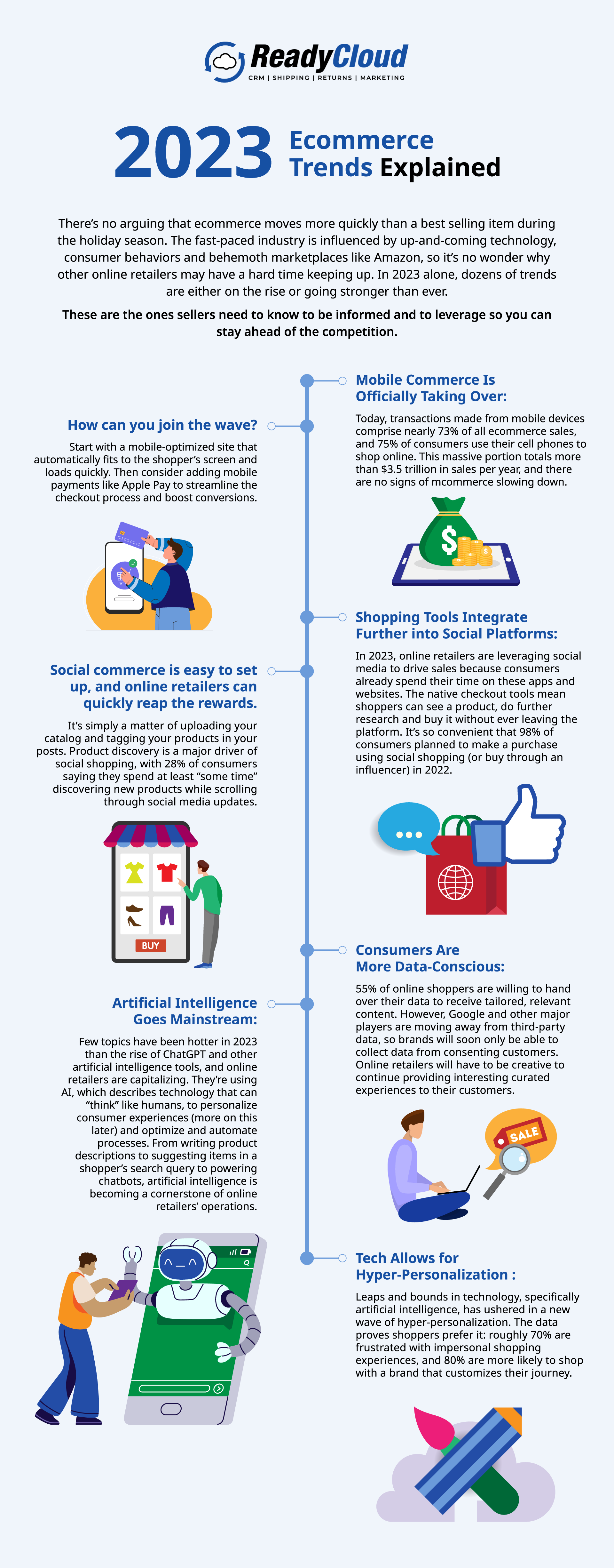With so many online retailers vying for consumers’ attention, getting the competitive edge can be a major hurdle. Standing out and capturing new customers requires a fresh and forward-thinking approach, leaning into new technology and different strategies. It requires innovation and creativity to propel your business into the limelight.
But we’ll spare you the challenge of generating new ideas — you have a business to run, after all. If you’re wondering how to promote your online store, this blog will help you learn about a few innovative methods you can use that are tried and true, based on growth marketing statistics and methods that really work! Read on to learn more.
Interactive Content
Interactive, gourmet content is a dynamic approach to engage shoppers by encouraging active participation rather than passive consumption. Research shows interactive content is 53% more engaging than static content, and 88% of marketers agree it helps brands stand out. For online retailers, interactive content can be a game-changer as it not only grabs attention but also fosters a deeper connection with potential customers.
Here are some ideas for using interactive content to promote your online store:
- Quizzes and Polls: Create product quizzes or polls related to your catalog or industry. For example, if you sell beauty products, you can develop a skincare quiz to help customers find the right products for their skin type. This not only educates shoppers but also leads to product recommendations.
- Interactive Videos: Incorporate interactive elements into your product videos, such as allowing viewers to click on hotspots within the video to see more details, pricing information or even make a purchase directly from the video. Four in ten consumers prefer this format over other types of videos.
- Calculators and Tools: Create calculators or tools that help customers make informed decisions. If you sell home improvement products, for instance, you could offer a calculator that estimates the amount of paint or tiles needed for a specific project.
- Interactive Infographics and Guides: Instead of static infographics or how-to guides, make them interactive! Allow users to click on various sections for more in-depth information or tips.
Live Streaming
Live streaming, or real-time video broadcasting, allows online retailers to connect with their audience in an authentic way because there is no opportunity to edit the footage or control how the viewers will interact. Nearly one-quarter of all video viewing time is dedicated to live streams, according to recent research, and it drives 27% more viewing minutes than on-demand video.
The best news is, Forbes experts predict an imminent explosion of livestream shopping in the U.S. where consumers can have a game-like interactive experience, and it’s on track to be worth $57 billion by 2025. Your brand can get ahead early and be familiar with the logistics by the time shoppers open their wallets.
No matter what you sell, you can try these live streaming ideas to promote your online store:
- Product Demonstrations and Launches: Use live streams to showcase your products in action. You can demonstrate how to use them, highlight key features and answer questions from viewers in real time.
- Behind-the-Scenes Tours: Invite your audience behind the scenes of your business. Show them how products are made, packed or tested. This transparent approach can build trust and create a stronger connection with your brand.
- Q&A Sessions: Host live Q&A sessions where customers can ask questions about your products, your brand or industry-related topics. It’s an excellent way to provide value, address concerns and foster a sense of community. You can also get plenty of ideas about what to do next, whether it’s a new product or way to engage customers.
Collaborative Marketing
Collaborative marketing involves partnering with other businesses that share a similar target audience or have products/services that align with yours. This type of collaboration can be a win-win for both parties, as it allows you to tap into each other’s customer bases and share marketing efforts. Think of it like influencer marketing, but you’re working with a complementary brand instead of an individual content creator.
If this idea sounds familiar, it’s because massive brands have collaborated on major campaigns that earned them widespread recognition. Uber and Spotify partnered to offer music streaming during rideshares, for example, and Doritos and Taco Bell created the Doritos Locos Taco that’s still available on menus around the country. Recently, ahead of its July release date, Mattel promoted the Barbie Movie with hundreds of brand collaborations.
These campaigns were huge lifts and aren’t always possible for every brand, but online retailers can still take the concept and apply it to smaller scale initiatives:
- Joint Promotions: Collaborate on joint marketing campaigns, promotions or events. This could involve co-hosting a giveaway, launching a co-branded product or running a special discount for customers who purchase from both brands.
- Content Collaboration: This one is easy — create content together that provides value to both audiences. For instance, you can collaborate on blog posts, videos or social media content that highlights how your products complement each other. Then, cross-promote the content to each other’s audiences.
- Co-Branding and Packaging: Consider creating co-branded products or packaging. This adds exclusivity to your offerings and encourages customers to purchase from both brands.
Bonus: Leverage Modern Technology
As a digital-first industry, ecommerce is poised to have all the latest technology integrated into its processes and practices. We’ll leave you with a few examples you can use to promote your online store.
Augmented Reality (AR) and Virtual Reality (VR): Implement AR and VR technologies to allow customers to visualize products in their own space (like furniture placement, testing virtual makeup or trying on clothes).
Voice Commerce: With the rise of voice assistants like Amazon’s Alexa and Google Assistant, it’s time to optimize your online store for voice search. This includes writing natural, conversational product descriptions.AI Personalization: Implement AI algorithms to analyze customer behavior and recommend personalized products. You can also use it to tailor marketing messages and product recommendations based on shoppers’ preferences and browsing history.
Get Creative!
As you’re working to elevate your ecommerce business, remember that innovation isn’t just about keeping up — it’s about setting trends, captivating audiences and building lasting connections with both your peers and your customers. By adding these innovative growth marketing strategies to your marketing arsenal, you’re not only promoting your business but also crafting unforgettable brand experiences for shoppers who become loyal customers.











